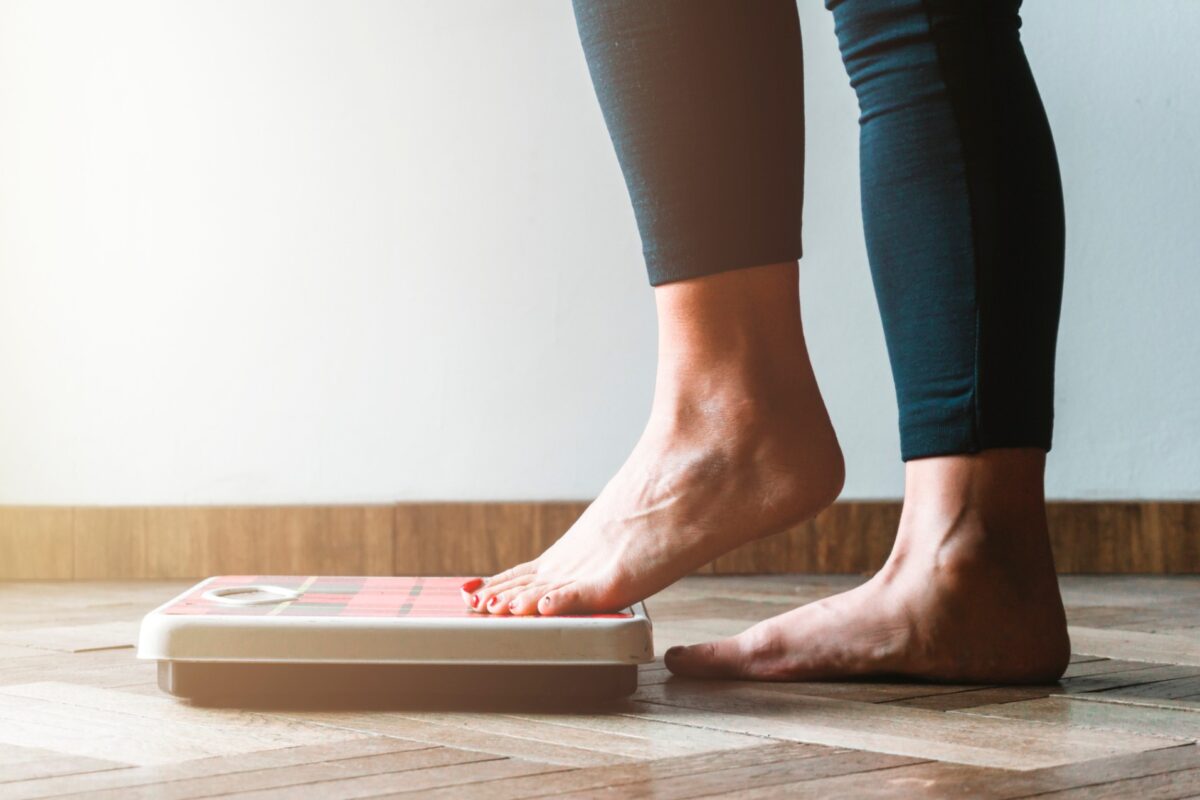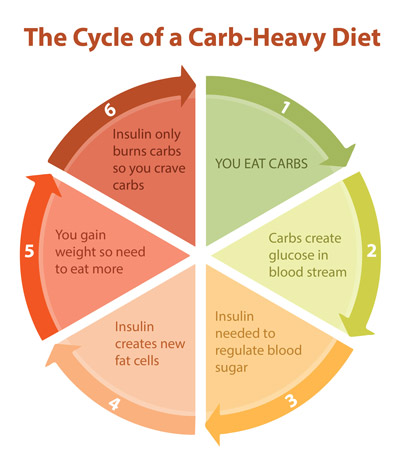Refined Carbs and Sugar: The Diet Saboteurs
How choosing healthier carbs can improve your health and waistline

There's a better way to lose weight. These dieting tips can help you avoid diet pitfalls and achieve lasting weight-loss success.

Pick up any diet book and it will claim to hold all the answers to successfully losing all the weight you want—and keeping it off. Some claim the key is to eat less and exercise more, others that low fat is the only way to go, while others prescribe cutting out carbs. So, what should you believe?
The truth is there is no “one size fits all” solution to permanent healthy weight loss. What works for one person may not work for you, since our bodies respond differently to different foods, depending on genetics and other health factors. To find the method of weight loss that’s right for you will likely take time and require patience, commitment, and some experimentation with different foods and diets.
While some people respond well to counting calories or similar restrictive methods, others respond better to having more freedom in planning their weight-loss programs. Being free to simply avoid fried foods or cut back on refined carbs can set them up for success. So, don’t get too discouraged if a diet that worked for somebody else doesn’t work for you. And don’t beat yourself up if a diet proves too restrictive for you to stick with. Ultimately, a diet is only right for you if it’s one you can stick with over time.
Remember: while there’s no easy fix to losing weight, there are plenty of steps you can take to develop a healthier relationship with food, curb emotional triggers to overeating, and achieve a healthy weight.
Some experts believe that successfully managing your weight comes down to a simple equation: If you eat fewer calories than you burn, you lose weight. Sounds easy, right? Then why is losing weight so hard?
A different way of viewing weight loss identifies the problem as not one of consuming too many calories, but rather the way the body accumulates fat after consuming carbohydrates—in particular the role of the hormone insulin. When you eat a meal, carbohydrates from the food enter your bloodstream as glucose. In order to keep your blood sugar levels in check, your body always burns off this glucose before it burns off fat from a meal.
If you eat a carbohydrate-rich meal (lots of pasta, rice, bread, or French fries, for example), your body releases insulin to help with the influx of all this glucose into your blood. As well as regulating blood sugar levels, insulin does two things: It prevents your fat cells from releasing fat for the body to burn as fuel (because its priority is to burn off the glucose) and it creates more fat cells for storing everything that your body can’t burn off. The result is that you gain weight and your body now requires more fuel to burn, so you eat more. Since insulin only burns carbohydrates, you crave carbs and so begins a vicious cycle of consuming carbs and gaining weight. To lose weight, the reasoning goes, you need to break this cycle by reducing carbs.

Most low-carb diets advocate replacing carbs with protein and fat, which could have some negative long-term effects on your health. If you do try a low-carb diet, you can reduce your risks and limit your intake of saturated and trans fats by choosing lean meats, fish and vegetarian sources of protein, low-fat dairy products, and eating plenty of leafy green and non-starchy vegetables.
It’s a mainstay of many diets: if you don’t want to get fat, don’t eat fat. Walk down any grocery store aisle and you’ll be bombarded with reduced-fat snacks, dairy, and packaged meals. But while our low-fat options have exploded, so have obesity rates. So, why haven’t low-fat diets worked for more of us?
The Mediterranean diet emphasizes eating good fats and good carbs along with large quantities of fresh fruits and vegetables, nuts, fish, and olive oil—and only modest amounts of meat and cheese. The Mediterranean diet is more than just about food, though. Regular physical activity and sharing meals with others are also major components.
Whatever weight loss strategy you try, it’s important to stay motivated and avoid common dieting pitfalls, such as emotional eating.
We don’t always eat simply to satisfy hunger. All too often, we turn to food when we’re stressed or anxious, which can wreck any diet and pack on the pounds. Do you eat when you’re worried, bored, or lonely? Do you snack in front of the TV at the end of a stressful day? Recognizing your emotional eating triggers can make all the difference in your weight-loss efforts. If you eat when you’re:
Stressed – find healthier ways to calm yourself. Try yoga, meditation, or soaking in a hot bath.
Low on energy – find other mid-afternoon pick-me-ups. Try walking around the block, listening to energizing music, or taking a short nap.
Lonely or bored – reach out to others instead of reaching for the refrigerator. Call a friend who makes you laugh, take your dog for a walk, or go to the library, mall, or park—anywhere there’s people.
BetterHelp is an online therapy service that matches you to licensed, accredited therapists who can help with depression, anxiety, relationships, and more. Take the assessment and get matched with a therapist in as little as 48 hours.
Take Assessment HelpGuide is user supported. We earn a commission if you sign up for BetterHelp’s services after clicking through from this site. Learn moreAvoid distractions while eating. Try not to eat while working, watching TV, or driving. It’s too easy to mindlessly overeat.
Pay attention. Eat slowly, savoring the smells and textures of your food. If your mind wanders, gently return your attention to your food and how it tastes.
Mix things up to focus on the experience of eating. Try using chopsticks rather than a fork, or use your utensils with your non-dominant hand.
Stop eating before you are full. It takes time for the signal to reach your brain that you’ve had enough. Don’t feel obligated to always clean your plate.
Permanent weight loss requires making healthy changes to your lifestyle and food choices. To stay motivated:
Find a cheering section. Social support means a lot. Programs like Jenny Craig and Weight Watchers use group support to impact weight loss and lifelong healthy eating. Seek out support—whether in the form of family, friends, or a support group—to get the encouragement you need.
Slow and steady wins the race. Losing weight too fast can take a toll on your mind and body, making you feel sluggish, drained, and sick. Aim to lose one to two pounds a week so you’re losing fat rather than water and muscle.
Set goals to keep you motivated. Short-term goals, like wanting to fit into a bikini for the summer, usually don’t work as well as wanting to feel more confident or become healthier for your children’s sakes. When temptation strikes, focus on the benefits you’ll reap from being healthier.
Use tools to track your progress. Smartphone apps, fitness trackers, or simply keeping a journal can help you keep track of the food you eat, the calories you burn, and the weight you lose. Seeing the results in black and white can help you stay motivated.
Get plenty of sleep. Lack of sleep stimulates your appetite so you want more food than normal; at the same time, it stops you feeling satisfied, making you want to keep eating. Sleep deprivation can also affect your motivation, so aim for eight hours of quality sleep a night.
Whether or not you’re specifically aiming to cut carbs, most of us consume unhealthy amounts of sugar and refined carbohydrates such as white bread, pizza dough, pasta, pastries, white flour, white rice, and sweetened breakfast cereals. Replacing refined carbs with their whole-grain counterparts and eliminating candy and desserts is only part of the solution, though. Sugar is hidden in foods as diverse as canned soups and vegetables, pasta sauce, margarine, and many reduced fat foods. Since your body gets all it needs from sugar naturally occurring in food, all this added sugar amounts to nothing but a lot of empty calories and unhealthy spikes in your blood glucose.
Calories obtained from fructose (found in sugary beverages such as soda and processed foods like doughnuts, muffins, and candy) are more likely to add to fat around your belly. Cutting back on sugary foods can mean a slimmer waistline as well as a lower risk of diabetes.
Even if you’re cutting calories, that doesn’t necessarily mean you have to eat less food. High-fiber foods such as fruit, vegetables, beans, and whole grains are higher in volume and take longer to digest, making them filling—and great for weight-loss.
It’s generally okay to eat as much fresh fruit and non-starchy vegetables as you want—you’ll feel full before you’ve overdone it on the calories.
Eat vegetables raw or steamed, not fried or breaded, and dress them with herbs and spices or a little olive oil for flavor.
Add fruit to low sugar cereal—blueberries, strawberries, sliced bananas. You’ll still enjoy lots of sweetness, but with fewer calories, less sugar, and more fiber.
Bulk out sandwiches by adding healthy veggie choices like lettuce, tomatoes, sprouts, cucumbers, and avocado.
Snack on carrots or celery with hummus instead of a high-calorie chips and dip.
Add more veggies to your favorite main courses to make your dish more substantial. Even pasta and stir-fries can be diet-friendly if you use less noodles and more vegetables.
Start your meal with salad or vegetable soup to help fill you up so you eat less of your entrée.
Set yourself up for weight-loss success by taking charge of your food environment: when you eat, how much you eat, and what foods you make easily available.
Cook your own meals at home. This allows you to control both portion size and what goes in to the food. Restaurant and packaged foods generally contain a lot more sugar, unhealthy fat, and calories than food cooked at home—plus the portion sizes tend to be larger.
Serve yourself smaller portions. Use small plates, bowls, and cups to make your portions appear larger. Don’t eat out of large bowls or directly from food containers, which makes it difficult to assess how much you’ve eaten.
Eat early. Studies suggest that consuming more of your daily calories at breakfast and fewer at dinner can help you drop more pounds. Eating a larger, healthy breakfast can jump-start your metabolism, stop you feeling hungry during the day, and give you more time to burn off the calories.
Fast for 14 hours a day. Try to eat dinner earlier in the day and then fast until breakfast the next morning. Eating only when you’re most active and giving your digestion a long break may aid weight loss.
Plan your meals and snacks ahead of time. You can create your own small portion snacks in plastic bags or containers. Eating on a schedule will help you avoid eating when you aren’t truly hungry.
Drink more water. Thirst can often be confused with hunger, so by drinking water you can avoid extra calories.
Limit the amount of tempting foods you have at home. If you share a kitchen with non-dieters, store indulgent foods out of sight.
The degree to which exercise aids weight loss is open to debate, but the benefits go way beyond burning calories. Exercise can increase your metabolism and improve your outlook—and it’s something you can benefit from right now. Go for a walk, stretch, move around and you’ll have more energy and motivation to tackle the other steps in your weight-loss program.
Lack time for a long workout? Three 10-minute spurts of exercise per day can be just as good as one 30-minute workout.
Remember: anything is better than nothing. Start off slowly with small amounts of physical activity each day. Then, as you start to lose weight and have more energy, you’ll find it easier to become more physically active.
Find exercise you enjoy. Try walking with a friend, dancing, hiking, cycling, playing Frisbee with a dog, enjoying a pickup game of basketball, or playing activity-based video games with your kids.
You may have heard the widely quoted statistic that 95% of people who lose weight on a diet will regain it within a few years—or even months. While there isn’t much hard evidence to support that claim, it is true that many weight-loss plans fail in the long term. Often that’s simply because diets that are too restrictive are very hard to maintain over time. However, that doesn’t mean your weight loss attempts are doomed to failure. Far from it.
Since it was established in 1994, The National Weight Control Registry (NWCR) in the United States, has tracked over 10,000 individuals who have lost significant amounts of weight and kept it off for long periods of time. The study has found that participants who’ve been successful in maintaining their weight loss share some common strategies. Whatever diet you use to lose weight in the first place, adopting these habits may help you to keep it off:
Millions of readers rely on HelpGuide.org for free, evidence-based resources to understand and navigate mental health challenges. Please donate today to help us save, support, and change lives.
Donate to HelpGuide.org today